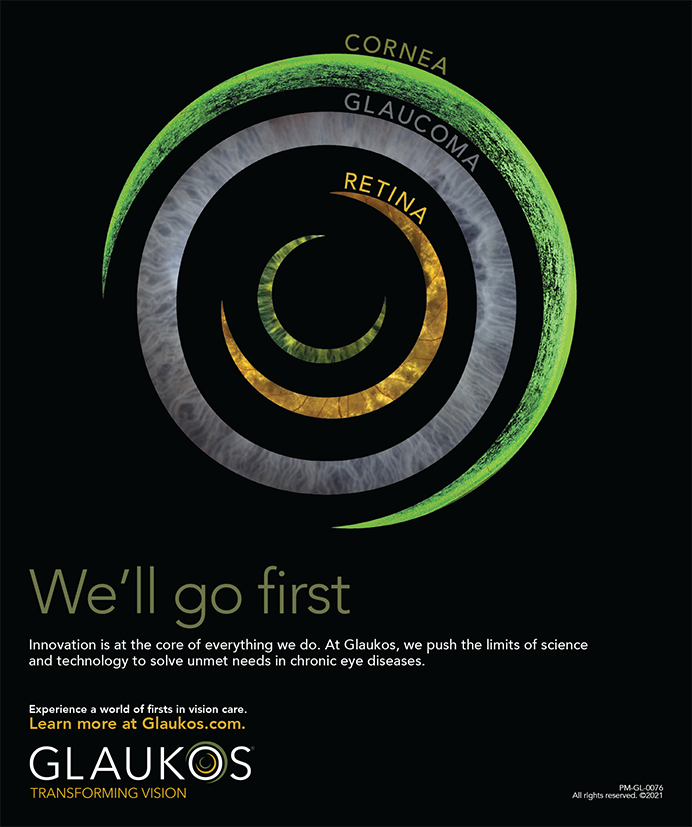Adenoviral conjunctivitis is a common cause of acute red eye. It is, however, frequently confused with bacterial and allergic conjunctivitis, largely due to similar and often overlapping signs and symptoms. Implementing a comprehensive protocol for diagnosing acute conjunctivitis to make an evidencebased diagnosis for adenovirus has dramatically affected how I treat patients who present with acute red eye.
RED EYE PROTOCOL
The Red Eye Protocol for conjunctivitis, designed around the diagnostic test AdenoPlus (Nicox, Inc.) enables me to make a more well-informed treatment decision. Before adopting a strategic approach to managing this troublesome disease state, I was making empirical diagnoses for patients with acute conjunctivitis. In essence, I was “playing the odds,” making a best guess based on my observations and treating accordingly. As a result, I may have frequently treated patients with unnecessary antibiotics. Recent research shows that the majority of acute conjunctivitis cases result in a prescription for antibiotics, even when those drugs are not needed.1
When a patient with red eyes comes in to my practice, I take his or her history and document the signs and symptoms. To rule out adenovirus, I immediately administer the diagnostic test. If the test result is positive, I treat the patient accordingly (Figure). Generally, I administer with supportive therapy, although I may prescribe a topical antiviral, such as ganciclovir (Zirgan; Bausch + Lomb), depending on how severe the symptoms are.2 I then educate the patient on the natural course of the infection and inform him or her of its highly contagious nature. I do not need to see the patient for another 2 weeks, because I know the condition may take that long to resolve.
Before I took these measures in my practice, my treatment method consisted of using empirical criteria to determine if the patient was likely to have a bacterial infection. If I believed a bacterial infection was possible, I would prescribe an antibiotic drop, knowing that there was a possibility that the patient may have a viral infection. I am not a big proponent of steroid use in these cases. If I were fairly certain that the patient had a viral infection, I may have prescribed supportive therapy, such as a lubricant, without an antibiotic. With this method, I was hesitant to prescribe an antiviral without true evidence of a viral infection.
COST AND TIME SAVINGS
I am now better able to counsel patients who have a positive test result about the natural course of adenovirus, primarily informing them that the condition may get worse before it gets better, may spread to the second eye, and may take 2 to 3 weeks for the virus to resolve. Almost equally as financially draining as prescribing unnecessary antibiotics, is patients having to return to my practice (and other practices) for unnecessary visits because they believe their condition is not getting any better. If a patient is unaware that he or she has adenovirus and does not know that the recovery time is 2 to 3 weeks, the patient is likely to believe the condition is getting worse as it runs its natural course. It is not uncommon for patients to panic after 2 or 3 days as their condition worsens. Many decide it is time to go “doctor shopping,” requesting other prescriptions from multiple doctors. Before long, 2 or 3 weeks have passed, and the patient has been on four different eye drops that do not work, because the patient has a viral infection that must run its course. In the end, the last doctor who treats the patient looks like a hero, when in fact, that doctor did very little. If the patient receives an accurate diagnosis and counseling initially, he or she knows what to expect and how to respond, which avoids wasting the patient's and the practice's time and money.
From an efficiency standpoint, having a dedicated protocol built around AdenoPlus allows me to make a diagnosis confirming or ruling out adenovirus during a patient's first visit. I can administer the test using four simple steps in less than 2 minutes, and results are visible in just 10 minutes. An accurate positive diagnosis allows me to avoid prescribing unnecessary antibiotics and consider other treatments, such as topical antivirals like ganciclovir. An accurate negative test for adenovirus reinforces the need for me to prescribe an antibiotic and allows me to apply some caution in prescribing steroids, which are also indiscriminately prescribed for patients with acute red eye and may prolong the course of the infection.
CONCLUSION
Ultimately, the Red Eye Protocol for conjunctivitis gives me peace of mind when diagnosing and treating these patients. More importantly, it gives my patients peace of mind because they leave my office with a firm, evidencebased diagnosis, and they are fully educated on what to expect.
Kenneth A. Beckman, MD, is the director of corneal services at Comprehensive EyeCare of Central Ohio and a clinical assistant professor of ophthalmology at The Ohio State University. He is a consultant to and a speaker for Bausch + Lomb and has consulted in the past for Nicox, but has no ongoing relationship with Nicox at this time. Dr. Beckman may be reached at (614) 890-5692; kenbeckman22@aol.com.
- Everitt H, Little P. How do GPs diagnose and manage acute infective conjunctivitis? A GP survey. Fam Pract. 2002;19(6): 658-660.
- Pepose JS. Topical ganciclovir for the treatment of adenovirus conjunctivitis. Advanced Ocular Care. 2012;Sept/Oct 3(5):24-26.


